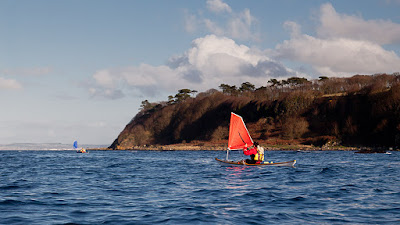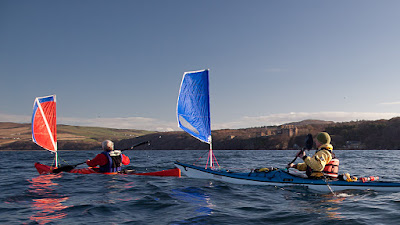Features.
The Kokatat has a front entry zip metal toothed zip which I initially found a bit awkward to start. Fully open, the zipper is high above your right shoulder. I keep the zip well lubed with zip lubricant and now have the knack to do it myself. The relief zip is worth every penny spent on it. There are handy zipped pockets on either shoulder with a security loop inside each. The only fault this suit has developed is that the stitching on one of these loops has become undone. These pockets will hold a small aquapac and I keep my car remote key in one and a small mobile phone in the other. There is another small pocket high on the left chest. There is a spray skirt tunnel that I never bother to use when sea kayaking. The latex gaskets show no sign of deterioration but I rinse the suit, inside and outside, with fresh water after every use making sure I give the latex a good wipe. Every few uses I wipe the latex with 303 Aerospace protectant, as recommended by Kokatat. The gaskets are protected from UV by being covered by cuffs at the wrists and neck. There is a GORE-TEX PacLite hood which is very well articulated so you can turn round without loosing vision. I don't use it often as I usually use a Lowe-Alpine Mountain cap in cold weather but it is really good in heavy rain or hail! The socks are also GORE-TEX and I get changed on a foam mat to avoid puncturing them on sharp grit underfoot. I use Lomo Aquaboots with this dry suit. The suit is reinforced on the seat, knees etc. and shows no sign of abrasion wear. A real feature of this suit is that it is not made in China in a factory powered by coal, it is made in the USA in an environmentally sound factory.
On the water.
The GORE-TEX material of the Kokatat suit is the most breathable I have worn on the water. This means that I can use it in warmer conditions than friends who have non GORE-TEX suits. In fact, I even use it in the Scottish early summer, when the water temperature is still cold. (I also use it in the Scottish late summer when the water has started to cool down again.) In June 2011 we went for an evening paddle along the SW coast of Dun in the St Kilda archipelago. I wore the Kokatat, a friend wore a two piece and swam after a swell broke over a reef. The resulting hypothermia drew that trip to an end. Interestingly, the paddler did have a dry suit on that trip, a Dam X, but did not wear it because it was too hot!
Paddling in winter a dry suit might keep you dry but it won't keep you warm on its own. You need to wear thermal insulation underneath. I use Fouth Element double layer Arctic fleece in the depths of winter. This will continue to keep you warm if it gets wet, after a suit tear for example. In spring and autumn I use Fourth Element single layer Xerotherm fleece.
The cut of the Kokatat suit is so unrestrictive that I hardly notice I am wearing it, even when paddling hard. (A Kokatat Large is larger round the waist than a Palm Large.)
Even after practising rescues, my Kokatat is still bone dry in its third season. Because I have two very painful and unstable knee joints, which limit my mobility, I like having the added security of a dry suit. It might take me a bit longer to rescue/self rescue if I fluff a roll. Falling in to cold water is a real danger while sea kayaking. In spring especially, when the water is cold but the air temperature is higher, this Kokatat dry suit can still be worn comfortably in air temperatures in which other suits would have you boiling! It's even available in a choice of colours! You can have mango like mine or radish like my BA.
Just the weather for a dry suit, a cold NW wind with a wind chill of -7C.
Value for money.
It costs an arm and a leg but I think it has been one of my best sea kayaking purchases ever! In Scotland, you can get it from Sea Kayak Oban. SystemX have recently been appointed UK distributor.
Overall score.
Score 12/10. It would have been 13/10 but for that security loop in a pocket coming undone!



















































